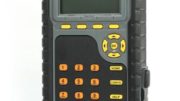Let’s say you’re on the job site and your customer makes changes to the plan. Or perhaps the blueprints weren’t accurate and you need to rethink where you’re putting the cable. Is it possible to do this stuff in your head, or should you just run the wires and hope for the best?
There’s good news if you are worried about situations like this. If you’re willing to cut a few corners you can calculate signal loss in your head. There are a lot of variables but if you’re willing to cut a few corners, you can get to a good number pretty quickly.
Why is loss important?
All signals degrade as they go over a cable. The signal loss is barely noticeable over short distances, but short distances add up if you’re cabling an entire house. Splitters also cause loss, in fact far more than cable runs usually. Split a signal 4 ways and the power for each outgoing line is only one quarter what it was coming in. If losses pile up, you’ll get problems with reception and while amplifiers can be used in some cases, in some cases (like DIRECTV in-home distribution) once you’ve reached a certain point there’s nothing you can do. So it’s important to keep an eye on loss as you’re planning your system.
How is loss measured?
Loss over cables is measured in dB, or decibels. dB are a simple way to measure loss because instead of using complex math, you can just add them. If your cable run has 6dB loss and your splitter puts in 3dB loss, then you have a total of 9dB loss. 10dB means you’ve lost 90% of the signal and 20dB means you have lost 99% the signal. If you think about it, you don’t really want to talk about what 30dB means.
Here’s the basic formula:
If you’re using an antenna, count 3dB for each 100 feet. You can cut that up if you want, like if you’re only using 50 feet of cable that’s 1.5dB because half the cable has half the loss.
If you’re using satellite, count 6dB for each 100 feet. Same thing, if you’re only using 50 feet count 3dB.
Then, add 2dB to every cable for the loss from the connectors.
- Each 2-way splitter has 4dB loss.
- Each 4-way splitter has 7dB loss.
- Each 8-way splitter has 14dB loss.
Here’s an example.
So if you are running 250 feet of cable total, using 5 cables each 50 feet, your loss from cables is 25dB for satellite or 17.5dB from satellite. The cables themselves have 15dB or 7.5dB of loss, and the connectors add another 10.
If you’re running 5 cables you’re probably also running a 4-way splitter, add another 7dB loss. So you’re at 32dB for satellite or 22.5dB for antenna. Those are some serious losses and as you can see from this equation it’s possible that you’ll have problems with your signal if you don’t find a way to either cut cable lengths or add an amplifier.
Of course, these numbers are worst-case scenarios and there’s going to be someone out there who will point out that cables vary in quality and signals lose different amounts depending on the frequency. But at least you can do something like this in your head and realize that you could have a potential problem here.
Get your cables and installation supplies from Solid Signal
SolidSignal.com is your source for all the installation supplies you’ll need for the job. You know that things change quickly, so why not order a little more than you need? We’re here for you and we can get all the specialized cables and tools you’ll use on the job site with expedited shipping!





